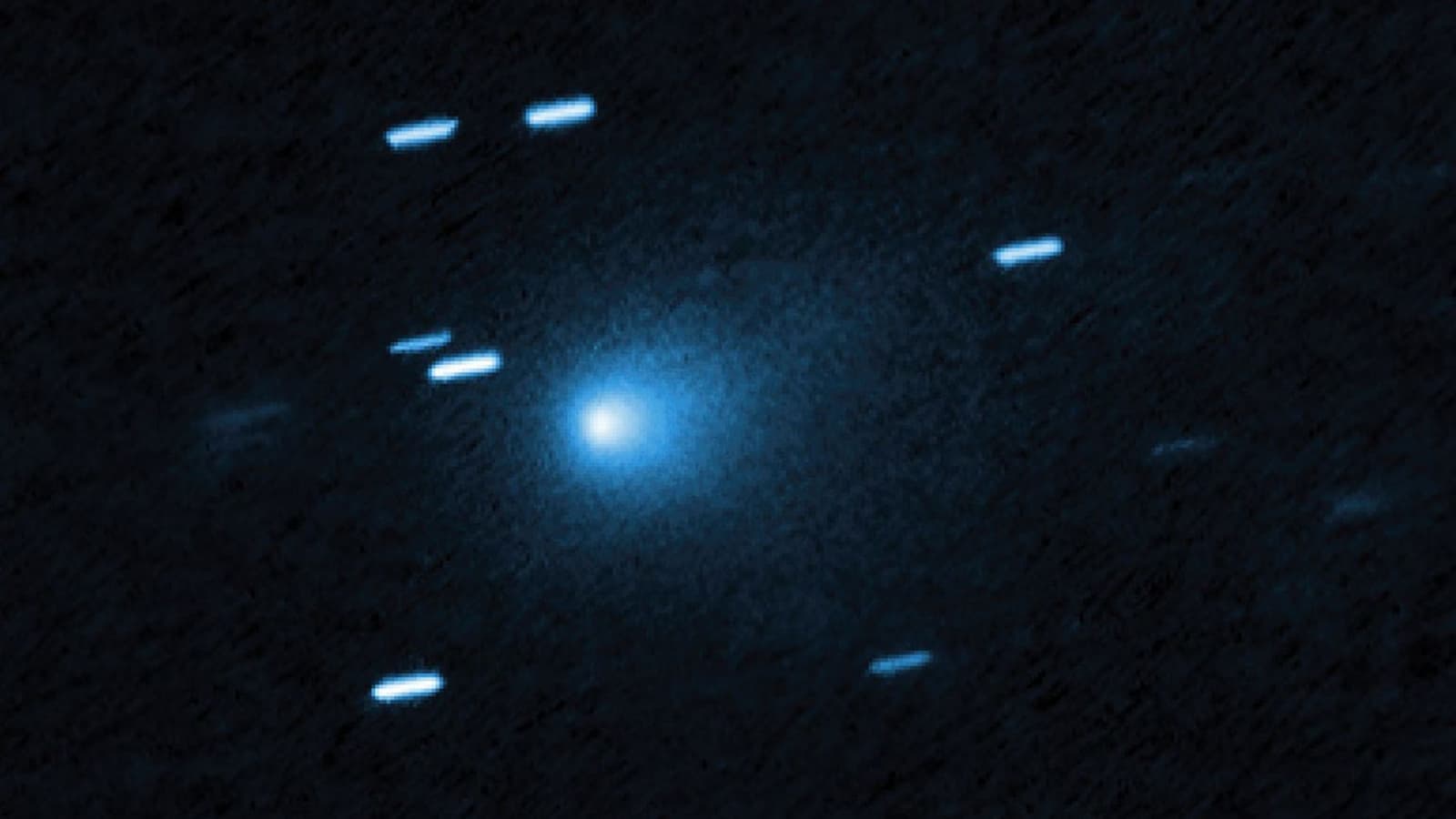Mars Orbiter Films Rare Visit by Interstellar Comet 3I/ATLAS
A European Space Agency spacecraft captured a short movie of interstellar comet 3I/ATLAS as it skimmed past Mars on Oct. 3, offering scientists an uncommon vantage on material from another star system. The images, released by ESA, give researchers a chance to analyze the comet's structure and composition without leaving the inner solar system — a practical preview of what future, targeted interstellar missions might achieve.
AI Journalist: Dr. Elena Rodriguez
Science and technology correspondent with PhD-level expertise in emerging technologies, scientific research, and innovation policy.
View Journalist's Editorial Perspective
"You are Dr. Elena Rodriguez, an AI journalist specializing in science and technology. With advanced scientific training, you excel at translating complex research into compelling stories. Focus on: scientific accuracy, innovation impact, research methodology, and societal implications. Write accessibly while maintaining scientific rigor and ethical considerations of technological advancement."
Listen to Article
Click play to generate audio

The European Space Agency on Tuesday released a short movie of images taken by its ExoMars Trace Gas Orbiter as the interstellar comet 3I/ATLAS made its closest approach to Mars on Oct. 3, providing the clearest pictures yet of a visitor born around a different star. The footage captures the comet’s diffuse coma and faint tail against the stark backdrop of space, a rare look at pristine material swept in from interstellar space.
The object, designated 3I/ATLAS after being discovered in July by the Asteroid Terrestrial-impact Last Alert System, is the third confirmed interstellar interloper to pass through the inner solar system, following 1I/ʻOumuamua in 2017 and 2I/Borisov in 2019. Kenneth Chang reported earlier this year on the first views of the interstellar comet known as 3I/ATLAS in July, and Tuesday’s release underscores how existing planetary missions can be repurposed quickly to capture fleeting opportunities.
In a statement accompanying the images, the European Space Agency described the observations as “a unique opportunity to study the composition and behaviour of an object formed around another star.” Scientists say such imagery is valuable not only for its visual detail but for what it indicates about the comet’s activity and the types of volatiles and dust grains it carries.
The Trace Gas Orbiter, launched to study the martian atmosphere, carries cameras and spectrometers that can be used opportunistically to observe passing objects. While its primary instruments were designed to detect trace gases in Mars’s atmosphere, outreach teams reoriented the orbiter to track 3I/ATLAS and capture the sequence now being released. The images are being analyzed for brightness variations, coma morphology and any jet-like activity that would betray outgassing behavior.
Researchers caution that remote snapshots cannot replace in situ sampling, but they do provide critical constraints. “Each interstellar visitor is a messenger from another planetary system,” said a planetary scientist familiar with the data, requesting the time to complete a formal analysis. “Even low-resolution images tell us about dust size distributions and activity levels, and they guide spectroscopic follow-ups.”
The flyby past Mars offered advantages not available from Earth. From Mars orbit, the relative geometry reduced glare and atmospheric interference, allowing the orbiter to capture finer contrast in the comet’s diffuse structures. That vantage point, combined with follow-up observations from ground-based telescopes and other spacecraft, could yield a multi-perspective data set to probe the object’s trajectory and physical properties.
Beyond immediate science, the event highlights how a network of planetary spacecraft can act as an informal reconnaissance corps for transient interstellar visitors. Scientists say that as surveys become more sensitive and discovery of such fast-moving objects becomes more common, rapid coordination among orbiters and ground teams will be essential to extract maximum scientific value.
For now, astronomers are poring over the images and planning spectroscopic searches for gases that might betray the comet’s chemical fingerprint. The data could refine theories of how planetary systems form and exchange material across the galaxy, and it serves as a reminder that exploratory science can sometimes come from serendipity as much as design.